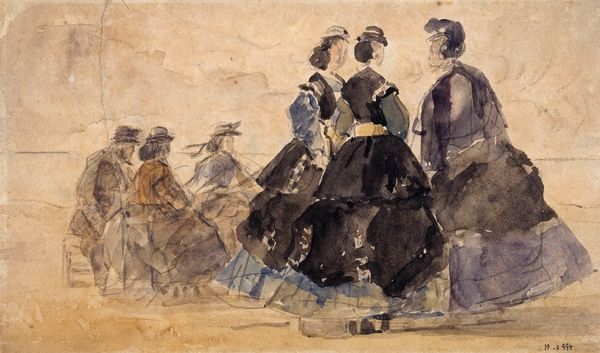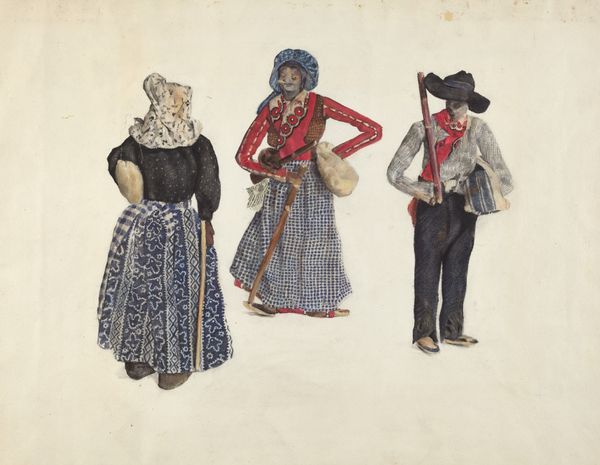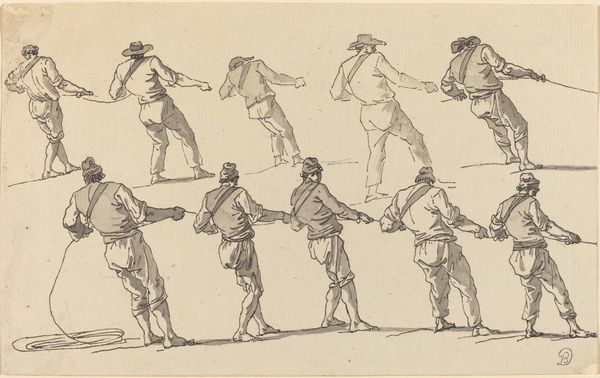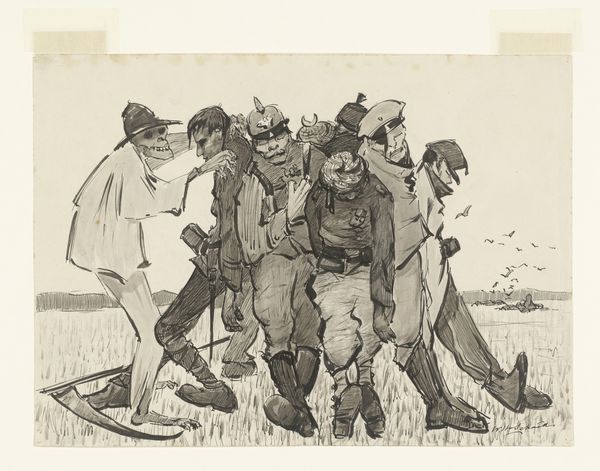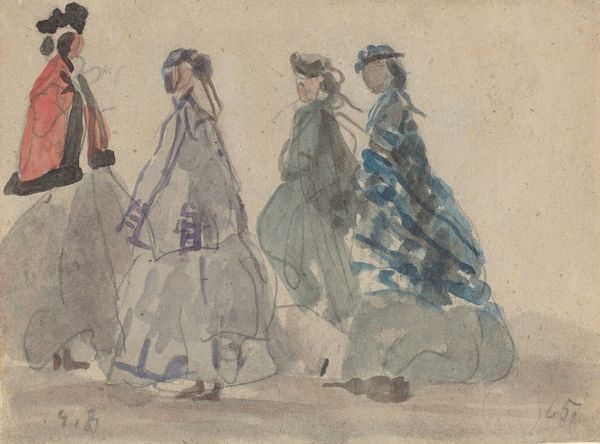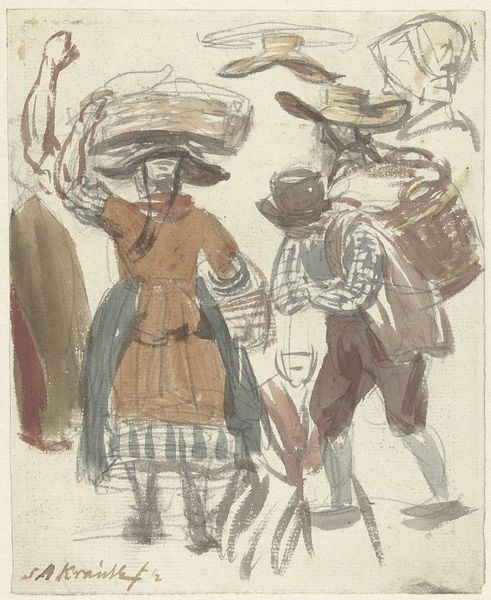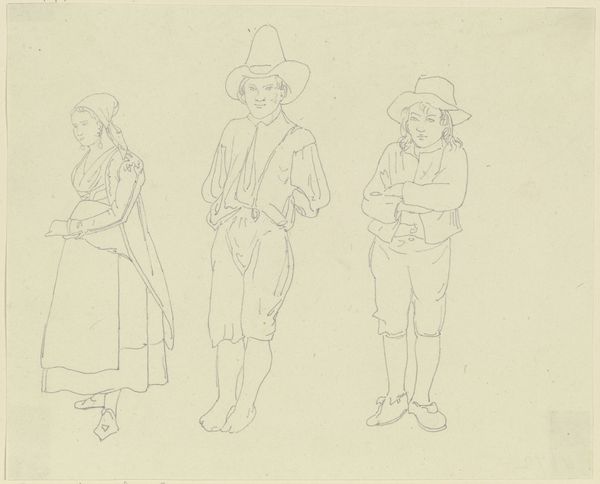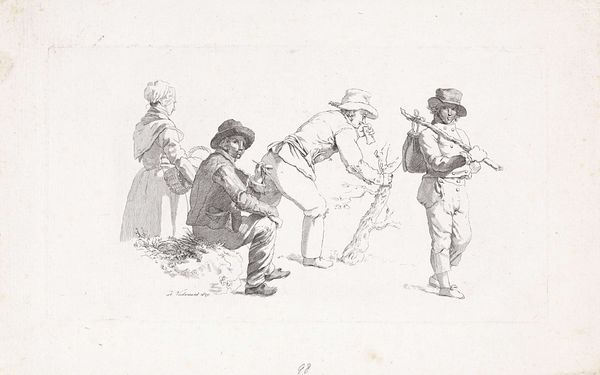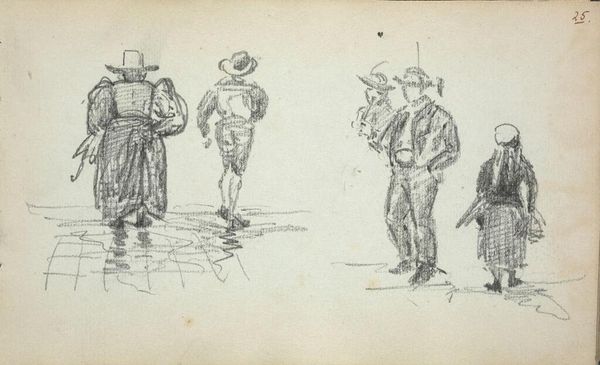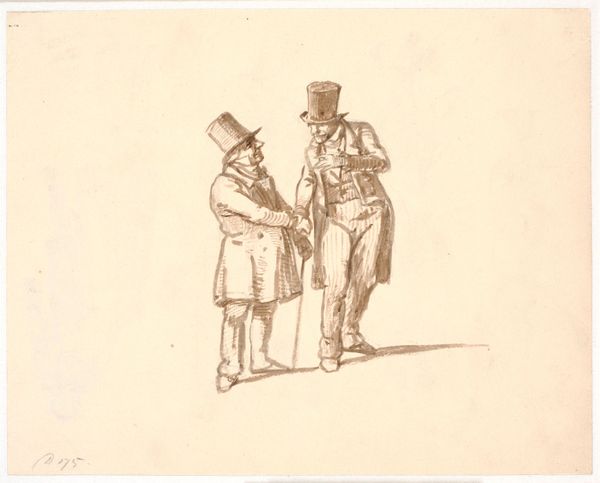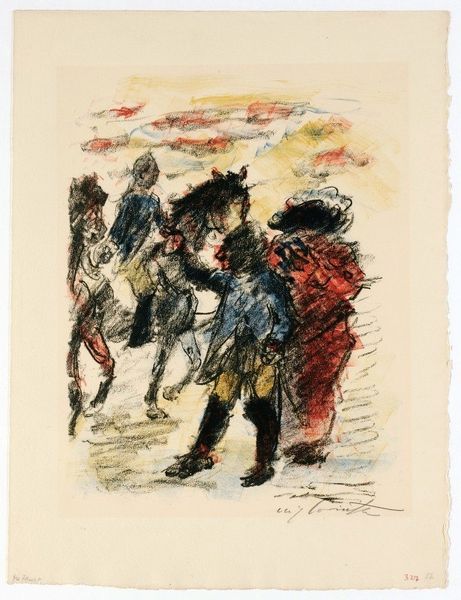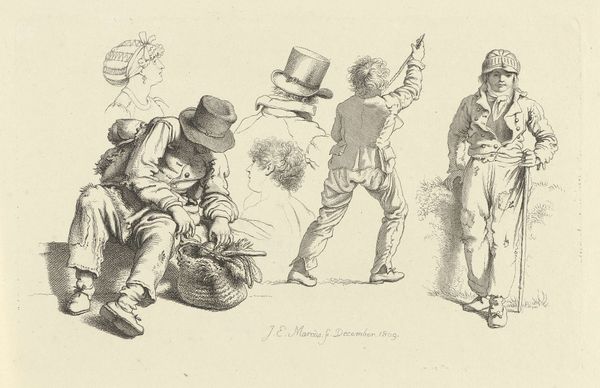
Five Studies of Native Costumes 1840
0:00
0:00
peterfendi
Kunstmuseum Liechtenstein, Vaduz, Liechtenstein
drawing, watercolor
#
portrait
#
drawing
#
figuration
#
watercolor
#
group-portraits
#
romanticism
#
genre-painting
Copyright: Public domain
Editor: Here we have Peter Fendi's "Five Studies of Native Costumes," created in 1840 using watercolor. The figures' vibrant clothing gives the work an animated feel, yet some of the figures appear unfinished. What do you see in this piece, especially given its title? Curator: It's crucial to approach this genre painting with a critical eye toward its historical context. These "native costumes," as Fendi calls them, were often romanticized and exoticized by the dominant culture. Consider the power dynamics at play: who is observing, and who is being observed? Editor: That's a great point! I hadn’t really considered that gaze, who has the power. So the artist, a Viennese painter, is portraying people in specific traditional attire. How would this relate to concepts of identity? Curator: Exactly! Think about how identity is often performed through clothing and cultural practices. In the 19th century, with the rise of nationalism, these costumes became powerful symbols of regional and ethnic identity. However, these representations can also reinforce stereotypes and contribute to the marginalization of the very people they claim to depict. Do you notice how some figures are fully rendered while others are just sketched outlines? Editor: Yes, that's what I found odd when I first saw this drawing! I was unsure about it. Curator: That variation in finish is suggestive, isn't it? Is it merely an unfinished work, or does it comment on the incomplete, always evolving, nature of identity itself, as well as the outside attempt to portray it? What is included and what is left out, is also important to question. Editor: This has completely changed how I see this piece! Before, I just saw colorful costumes, but now I'm thinking about representation, power, and identity. Curator: Precisely. And remember, art is not created in a vacuum. Engaging with the historical and social context allows us to have a much more critical and nuanced perspective.
Comments
No comments
Be the first to comment and join the conversation on the ultimate creative platform.
